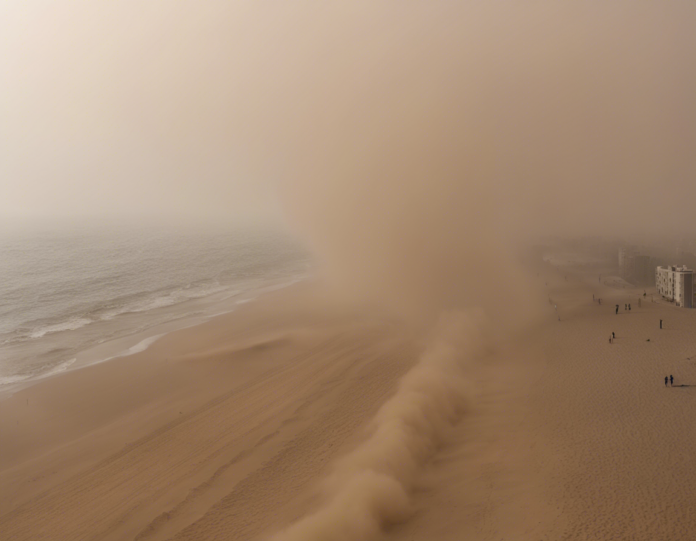Introduction
Recent events at Marina Beach have brought to light the impact of dust storms, highlighting the significance of understanding and being prepared for such natural occurrences. Dust storms are common in various parts of the world and can have detrimental effects on the environment, health, and infrastructure. In this article, we will delve into the specifics of dust storms, focusing particularly on the recent incident at Marina Beach. We will discuss the causes, impact, and potential preventive measures to mitigate the effects of dust storms in the future.
Understanding Dust Storms
What is a Dust Storm?
A dust storm is a meteorological phenomenon characterized by a strong gust of wind carrying dust and sand particles over a large area. These storms often occur in arid and semi-arid regions where the soil is loose and dry. The intense wind picks up particles from the ground, creating a dense cloud of dust that can reduce visibility and impact air quality.
Causes of Dust Storms
-
Natural Causes: Dust storms can occur naturally due to strong winds in arid regions. The lack of vegetation to hold the soil in place makes it easier for the wind to pick up dust particles.
-
Human Activities: Human activities such as deforestation, overgrazing, and construction can also contribute to the formation of dust storms. When the land is disturbed, it becomes more susceptible to erosion, leading to increased dust in the air.
Impact of Dust Storms
Environmental Impact: Dust storms can have a significant impact on the environment by stripping the land of fertile topsoil, disrupting ecosystems, and affecting plant and animal life.
Health Impact: The dust particles carried in the air during a dust storm can pose health risks, especially for individuals with respiratory conditions. Breathing in fine dust particles can lead to respiratory issues and exacerbate existing health problems.
Infrastructure Impact: Dust storms can also damage infrastructure such as buildings, roads, and power lines. The abrasive nature of the dust particles can cause erosion and corrosion, leading to costly repairs and maintenance.
Preventive Measures
Vegetative Cover: Planting vegetation such as trees, grass, and shrubs can help prevent soil erosion and reduce the risk of dust storms. The roots of plants hold the soil in place, making it less susceptible to being carried away by the wind.
Soil Conservation Practices: Implementing soil conservation practices such as contour plowing, terracing, and cover cropping can help maintain soil structure and prevent erosion, reducing the likelihood of dust storms.
Weather Monitoring: Keeping track of weather patterns and forecasts can help in predicting and preparing for dust storms. Early warning systems can alert communities to take necessary precautions and protective measures.
Conclusion
In conclusion, dust storms are a natural occurrence that can have wide-ranging impacts on the environment, health, and infrastructure. Understanding the causes and effects of dust storms is crucial in developing preventive measures to mitigate their impact. By implementing practices such as maintaining vegetative cover, conserving soil, and monitoring weather patterns, we can reduce the risk of dust storms and protect ourselves and the environment.
**FAQs:
-
What should I do during a dust storm?
During a dust storm, it is essential to stay indoors and close all windows and doors to prevent dust from entering your home. Additionally, wearing a mask when going outside can help protect your respiratory health. -
Are dust storms the same as sandstorms?
While both dust storms and sandstorms involve the movement of particles by strong winds, dust storms typically carry a mix of dust and sand particles, while sandstorms are predominantly made up of sand particles. -
Can dust storms lead to long-term health effects?
Prolonged exposure to dust particles during dust storms can have long-term health effects, especially for individuals with respiratory conditions. It is crucial to take precautions and seek medical attention if experiencing any symptoms. -
How can I protect my pets during a dust storm?
Ensure that your pets have access to shelter indoors during a dust storm. Keep windows and doors closed to prevent dust from entering your home, and provide clean water to keep them hydrated. -
Can dust storms be predicted in advance?
While dust storms can be challenging to predict with absolute certainty, advancements in weather monitoring and forecasting technologies have made it possible to provide early warnings for potential dust storm events. Monitoring weather reports can help in staying informed and prepared.
